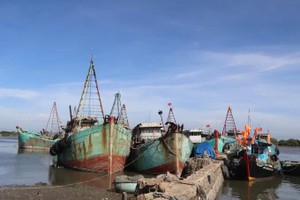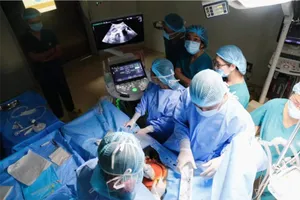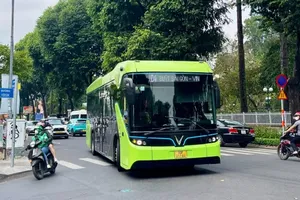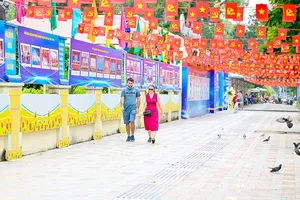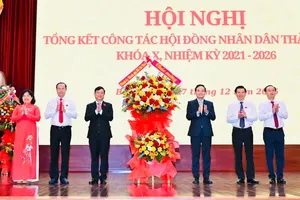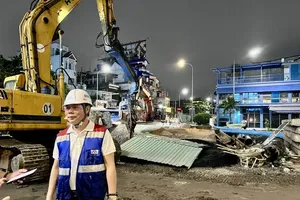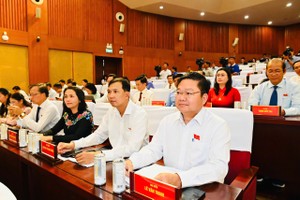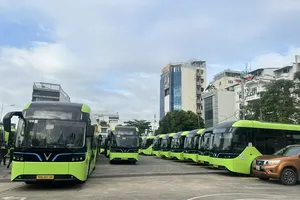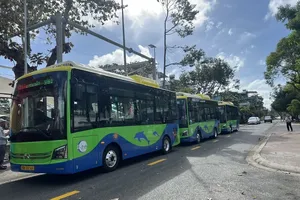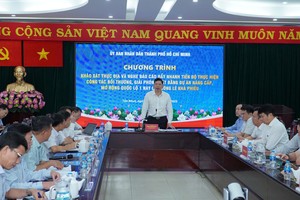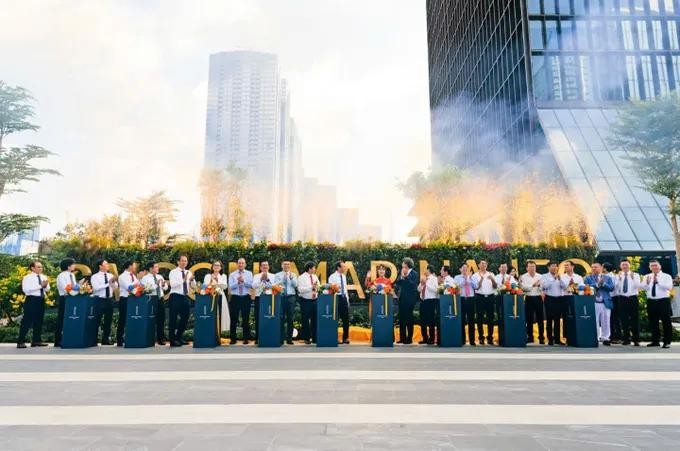
The event aims to mark the 80th anniversary of the August Revolution and National Day (September 2, 1945–September 2, 2025).
Among the total, nine projects are under central government jurisdiction, including five newly launched and four completed and put into operation. The remaining 30 projects fall under municipal authority, with 23 newly commencing and seven officially inaugurated. The initiatives primarily focus on transportation and urban space development.
On the same day, the People’s Committee of the city, in collaboration with Singapore’s Keppel Corporation, officially inaugurated the Saigon Marina International Financial Center (Saigon Marina IFC), located at No. 2 Ton Duc Thang Street, Saigon Ward.
The 55-storey building with five basements has a total gross floor area of over 106,000 square meters. Around 87,000 square meters are dedicated to premium Grade A office space, while the remainder houses a retail mall, fine dining establishments, conference facilities, and high-end amenities. The Saigon Marina IFC tower ranks among the three tallest towers in Vietnam and meets the LEED Gold green building standard, with more than 30 percent of its space allocated to greenery and open-air environments. Notably, the tower is the first in Vietnam to adopt the Transit-Oriented Development (TOD) model, offering direct connectivity to the Ba Son underground station on Metro Line 1.
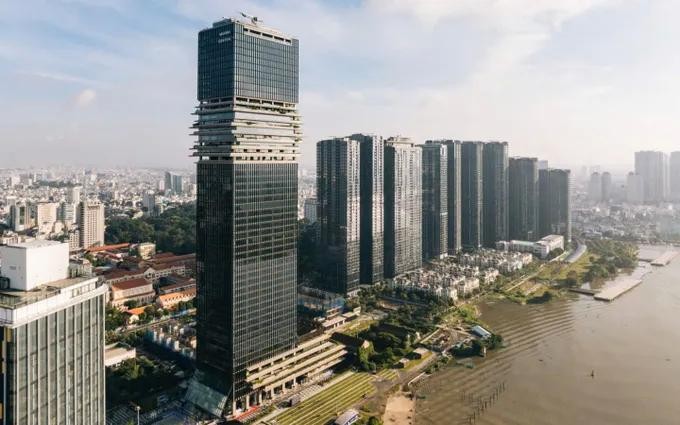
Speaking at the inauguration ceremony, Deputy Prime Minister Ho Duc Phoc emphasized that the Saigon Marina IFC represents a foundational step toward the establishment of Ho Chi Minh City's International Financial Center, envisioned as a new driving force for Vietnam's economic growth.
Vice Chairman of the Ho Chi Minh City People’s Committee, Nguyen Van Dung, affirmed that the Saigon Marina IFC is not only a symbol of green and sustainable architecture but also a strategic convergence point for global corporations and financial institutions. He noted that the project plays a key role in realizing National Assembly Resolution 222/2025 on the establishment, operation, management, and supervision of special mechanisms and policies for an international financial center in Ho Chi Minh City and Da Nang.
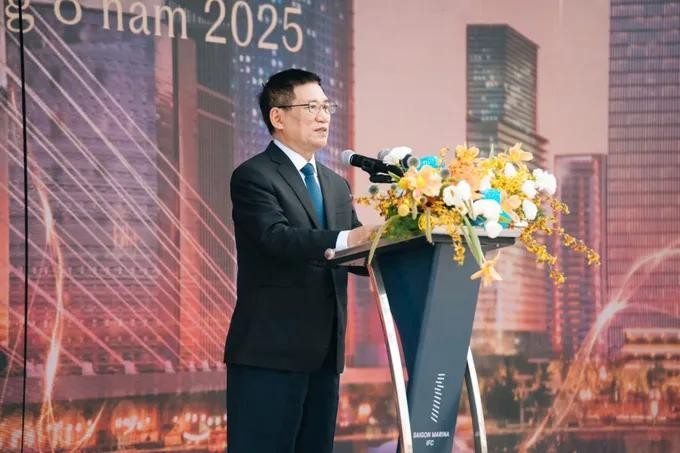
On the same day, the Housing and Urban Development Corporation (HUD) under the Ministry of Construction started the construction of the HUD Thu Duc Social Housing Project, located in Hiep Binh Ward. The project is among the first to be implemented under Resolution No. 201/2025/QH15 of the National Assembly on piloting special mechanisms and policies for social housing, while reviewing planning and allocating suitable land for projects with convenient locations and synchronized infrastructure.
Speaking at the groundbreaking ceremony, Vice Chairman of the Ho Chi Minh City People’s Committee, Nguyen Manh Cuong, stated that the city has been assigned a target of developing 199,400 social housing units by 2030, with at least 13,040 units to be completed in 2025. To meet these ambitious goals, the city is actively decentralizing authority and streamlining administrative procedures to facilitate private sector participation. The city’s Vice Chairman urged HUD to concentrate its resources to ensure the project's quality and timely delivery and encouraged the corporation to continue participating in future social housing initiatives across the city.
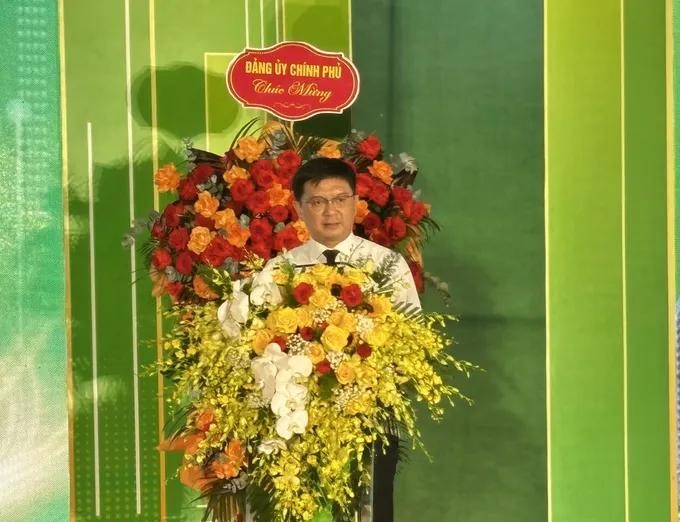
Deputy Minister of Construction Nguyen Van Sinh stressed the need for comprehensive and synchronized measures to help Ho Chi Minh City meet its target of developing 199,400 social housing units by 2030, including the completion of 13,040 units by the end of 2025.
According to the Deputy Minister of Construction, for projects that have already broken ground, city authorities must regularly monitor and urge developers to mobilize sufficient resources and stay firmly committed to completing construction by 2025. For projects where developers have already been selected, he called for the swift handover of land, timely design appraisals, and expedited construction permits to enable groundbreaking within the same year. As for land plots where investors have not yet been chosen, the city must accelerate administrative procedures to approve investment policies and bring those projects online as quickly as possible.
The city must also review and update its urban and industrial zoning plans to ensure sufficient land is allocated for social housing, with a focus on convenient locations well-connected to public infrastructure in order to attract workers and residents.
In addition, administrative procedures must continue to be streamlined to encourage private sector participation. Ho Chi Minh City is also urged to proactively allocate budget resources for land clearance and compensation while facilitating capital through the Vietnam Bank for Social Policies to provide low-interest loans for individuals to purchase or lease social housing units.
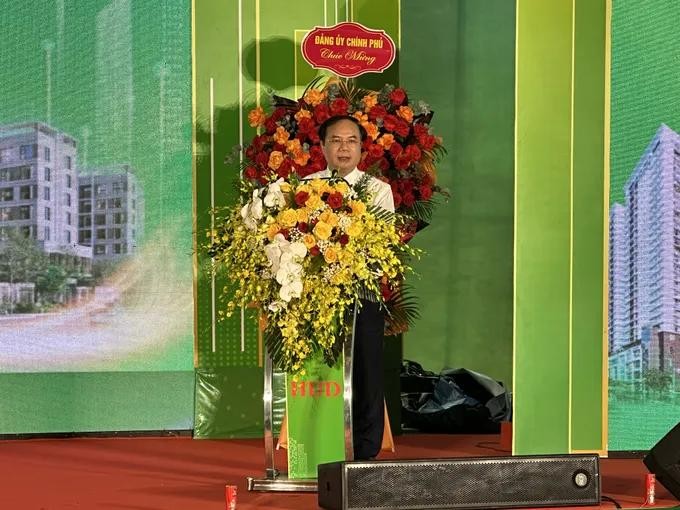
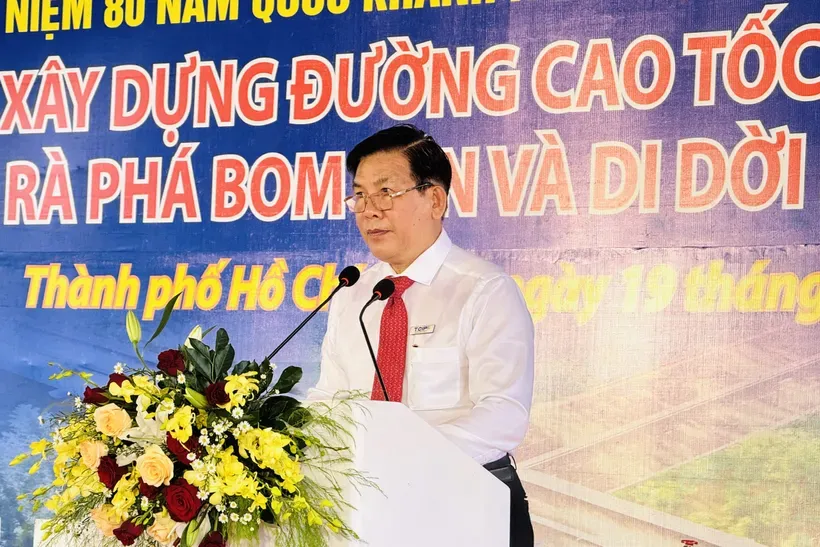
Additionally, the Ho Chi Minh City Transportation Works Construction Investment Project Management Board has officially commenced key preparatory works for the HCMC–Moc Bai Expressway project, which connects the city to Tay Ninh Province. The launched package includes unexploded ordnance (UXO) clearance, relocation of existing technical infrastructure, and the construction of access roads for residents, marking an important step toward the full-scale implementation of the expressway.
In August 2024, the Prime Minister approved the investment policy of the first phase of the Ho Chi Minh City-Moc Bai expressway project under the model of a build-operate-transfer (BOT) contract.
In the first phase, the Ho Chi Minh City—Moc Bai Expressway has a route length of 51 km, including 24.7 km passing through Ho Chi Minh City and 26.3 km running through Tay Ninh. It will start from Ring Road 3 at KM56+245 in Ho Chi Minh City’s Phu Hoa Dong Ward, span over the Vam Co River, and terminate at Km53+850, where it links to National Highway 22 in Tay Ninh Province’s Ben Cau Commune, approximately 7 kilometers from the Moc Bai international border gate.
The road is designed with four lanes and a designed speed of 120 km/h with a total capital of more than VND19,617 billion (US$747 million), including nearly VND9,674 billion (US$368 million) coming from the State budget (consisting of VND2,872 billion from the State budget and over VND6,802 billion from the city’s budget, and the remaining capital to be arranged by the investor).
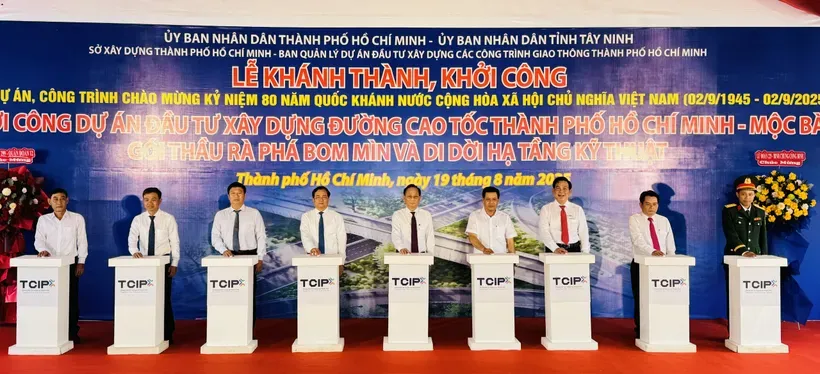
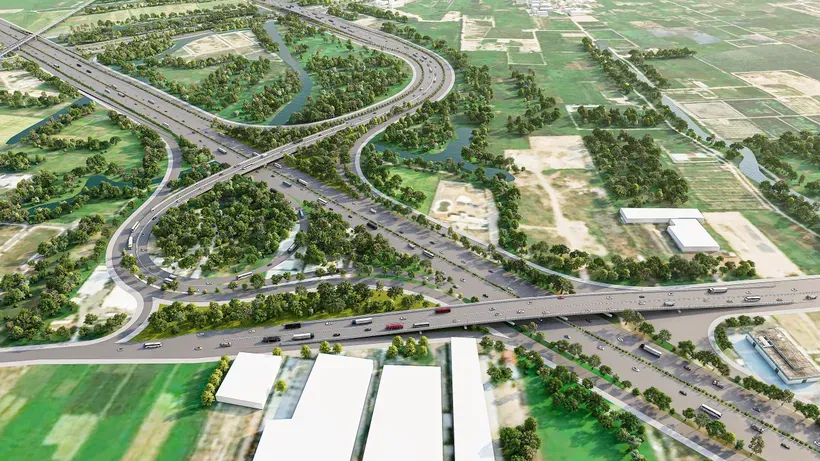
The new expressway is expected to reduce traffic pressure on National Highway No. 22 and contribute to the economic and social development of the city, Tay Ninh Province, and neighboring countries, as well as shorten the travel time of passenger and freight transport between Ho Chi Minh City and Tay Ninh Province, the southeastern region, and Cambodia via Moc Bai International Border Gate.
According to Mr. Luong Minh Phuc, Director of the Ho Chi Minh City Transportation Works Construction Investment Project Management Board, the city is leveraging special mechanisms approved by the National Assembly and the central government to accelerate progress. The main phase of the project is slated to begin construction in January 2026, with completion targeted for the end of 2027.


